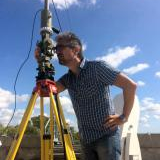New Trends in High Resolution Imagery Processing
A special issue of Remote Sensing (ISSN 2072-4292). This special issue belongs to the section "Remote Sensing Image Processing".
Deadline for manuscript submissions: closed (30 June 2022) | Viewed by 26999
Special Issue Editors
Interests: HRSI; photogrammetry; historical cartography; GIS; GNSS
Special Issues, Collections and Topics in MDPI journals
Interests: drones; GPS/GNSS; geomatic; geodesy; photogrammetry; survey; remote sensing; GIS; post seismic survey
Special Issues, Collections and Topics in MDPI journals
Special Issue Information
Dear Colleagues,
In the last twenty years, the exponential diffusion of high-resolution (HR) and very-high-resolution (VHR) satellite, UAV and terrestrial images and the advances in open and close source software and algorithms have stimulated methodological research in this field.
High-resolution satellite imagery (HRSI) became available in 1999 with the launch of IKONOS, the first civil satellite offering a spatial resolution of 1 m for panchromatic images. Since then other high-resolution satellite platforms have been launched with on board technologically advanced sensors that acquire panchromatic and multispectral images with, respectively, sub-metric and metric resolution. In addition, satellite with stereo and tri-stereo capabilities have been implemented to satisfy the increasing need for higher accuracy and larger area coverage for digital model production. Subsequently, the miniaturization of navigation systems has allowed the great diffusion of drones with photogrammetric capabilities.
These recent advances in sensor technology and algorithm development enable the use of HR remote sensing imagery for development of various product as DTM/DEM and DSM, orthophoto and orthophotomosaics, three-dimensional photogrammetric models. The application fields are increasingly developing from landslide and landfill monitoring to archaeological applications, monitoring an active volcanic area, morphological studies and so on.
Independently of application, each product must be validated in order to define the metric level of precision and accuracy. In fact, high and very-high resolution images are affected by deformation mainly due to camera distortions and acquisition geometry, then they must undergo a geometric rectification process in order to be used for metrical purposes.
This Special Issue aims at collecting new developments, methodologies and applications of high and very high-resolution data for remote sensing. We welcome submissions which provide the community with the most recent advancements on all aspects of satellite remote sensing, including but not limited to:
- Geometric processing (orientation, orthorectification)
- Geometric quality assessment
- DSM/DEM/DTM extraction and validation
- New open-source solutions for high resolution imagery processing
- Application with multiresolution and multiplatform data
- New approaches for precision and accuracy assessment
- Improvements of existing methods for precision and accuracy assessment
- Monitoring an active volcanic area
- Landslide and landfill monitoring
- Archaeological applications
- New sensors on mobile device (High resolution camera,GNSS and Lidar)
Dr. Valerio Baiocchi
Guest Editors
Manuscript Submission Information
Manuscripts should be submitted online at www.mdpi.com by registering and logging in to this website. Once you are registered, click here to go to the submission form. Manuscripts can be submitted until the deadline. All submissions that pass pre-check are peer-reviewed. Accepted papers will be published continuously in the journal (as soon as accepted) and will be listed together on the special issue website. Research articles, review articles as well as short communications are invited. For planned papers, a title and short abstract (about 100 words) can be sent to the Editorial Office for announcement on this website.
Submitted manuscripts should not have been published previously, nor be under consideration for publication elsewhere (except conference proceedings papers). All manuscripts are thoroughly refereed through a single-blind peer-review process. A guide for authors and other relevant information for submission of manuscripts is available on the Instructions for Authors page. Remote Sensing is an international peer-reviewed open access semimonthly journal published by MDPI.
Please visit the Instructions for Authors page before submitting a manuscript. The Article Processing Charge (APC) for publication in this open access journal is 2700 CHF (Swiss Francs). Submitted papers should be well formatted and use good English. Authors may use MDPI's English editing service prior to publication or during author revisions.
Keywords
- Orthorectification
- Accuracy assessment
- DSM/DEM/DTM
- Tri-stereo pairs
- High resolution imagery
- UAV
- SfM
- Satellite imagery
- New sensors on mobile device (High resolution camera,GNSS and Lidar)






